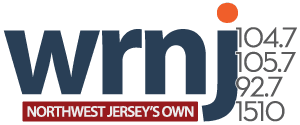
Delaware River Joint Toll Bridge Commission approves 2026 toll adjustments to support infrastructure, financial stability
The Delaware River Joint Toll Bridge Commission on Monday approved a new toll rate structure that will take effect on or about Jan. 1, 2026, to fund infrastructure improvements, offset rising construction costs and maintain the agency’s financial strength.
The approved adjustments apply to all vehicle classes across the Commission’s eight toll bridges. A firm implementation date is expected to be announced in December.
Under the new rates, the E-ZPass toll for Class 1 passenger vehicles — two-axle vehicles under eight feet high — will rise by 50 cents to $2. The TOLL BY PLATE rate for the same vehicles will increase from $3 to $5. Nearly 87% of all Class 1 transactions currently use E-ZPass.
Per-axle E-ZPass rates for vehicles eight feet or higher, including trucks and buses, will increase from $4.50 to $6.50. The corresponding TOLL BY PLATE rate will rise from $5 to $8 per axle. E-ZPass is used in more than 88% of transactions for these larger vehicle classes.
The Commission noted its E-ZPass rates remain lower than many other toll agencies in the region.
The rate adjustments follow a 37-day public comment period conducted after the proposal was announced July 28. The Commission collected feedback through virtual hearings, email, an online portal, U.S. Mail and teleconferencing.
Commission responsibilities
The DRJTBC operates eight toll bridges and 12 “toll-supported” non-revenue bridges along the Delaware River between Bucks County, Pa., and the New Jersey–New York state line. The agency manages 79 lane miles of road, 39 approach bridges, and multiple maintenance and operational facilities.
Its eight toll bridges are:
• Trenton–Morrisville (Route 1)
• Scudder Falls (I-295)
• New Hope–Lambertville (Route 202)
• I-78
• Easton–Phillipsburg (Route 22)
• Portland–Columbia (Routes 611, 46, and 94)
• Delaware Water Gap (I-80)
• Milford–Montague (Route 206)
The agency is funded entirely by toll revenue and does not receive federal or state subsidies.
Cashless tolling
The Commission converted fully to cashless, all-electronic tolling between 2024 and 2025. Tolls are collected only in the Pennsylvania-bound direction. The higher TOLL BY PLATE rates reflect the administrative costs of identifying vehicle owners and mailing bills.
Financial considerations
Executive Director Joseph J. Resta said the toll changes were necessary to prevent future shortfalls in the agency’s General Fund Reserve Balance and Debt Service Coverage Ratio, financial metrics used by bond-rating firms to evaluate creditworthiness.
The Commission maintained strong credit ratings during recent years, aided by a 2020 Financial Resilience Policy and stable reserves. However, Resta said inflation in construction costs and the age of the Commission’s infrastructure — with some bridge substructures dating to the early 1800s — require increased revenue to preserve structural integrity, safety, traffic flow, and 24/7 maintenance operations.
“The toll increases were imperative to ensure the structural integrity of the agency’s bridges, improve safety and conveyance of traffic, and fund operating needs like winter-storm plowing and salting,” the Commission said.
A finalized effective date for the new toll schedule will be announced next month.





